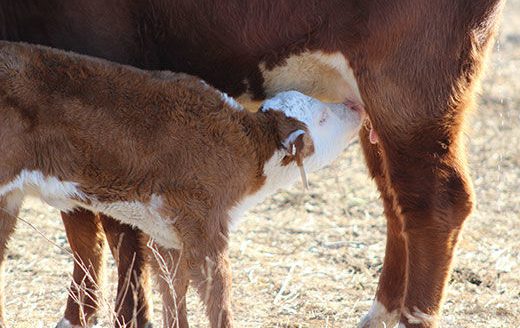Clostridial diseases can be lethal to dairy cattle, especially during times of stress, injury or changes in feeding practices.1 Using vaccinations paired with appropriate management practices can prevent common clostridial diseases for both the cow and calf.
Symptoms of clostridial diseases are hard to detect, with the first sign often being death. If a producer does see early symptoms, they may include bloating in calves, bloody diarrhea, muscle swelling and angry inflammation around a wound. Necropsy findings may show reddening and ulcers of the abomasum, inflammation of the intestine and muscle damage.
“For calves, clostridial problems are usually associated with feeding milk, especially where the volume of milk, intervals between feedings and concentration of milk solids vary; and through soil-contaminated milk and equipment,” commented Dr. Mark van der List, DVM, Boehringer Ingelheim. “We also see clostridial diseases in cows and calves caused by wound infections. For example, clostridial organisms can invade a vaginal tear from calving.”
A solid strategy in preventing a clostridial outbreak in calves, prior to their vaccination, is to be consistent with milk-feeding practices, and to ensure they have good absorption of maternal antibodies against clostridia from colostrum. Additionally, it is important to have hygienic feeding conditions for minimal contamination to feeding equipment from soil, which harbors clostridial spores.
Using contaminated needles when vaccinating is another way that both cows and calves can be infected with clostridial spores. Van der List said that changing needles frequently is important when it comes to herd health. According to “Dairy Animal Care Quality Assurance” guidelines, single-use needles are best for vaccinating. However, if used more than once, a needle should be used for a maximum of 10 head of cattle, and then changed.
Treatment is rarely successful, so clostridial vaccination is critical. The most timely way to provide protection for young calves is transferred immunity through colostrum from a properly vaccinated cow.
“Vaccination is very successful in older calves and cows,” remarked van der List. “Clostridial vaccines should be included in calf, heifer and cow protocols. It is also important to vaccinate dry cows.”
Dr. van der List suggests choosing the convenience of a seven-way vaccine that only requires a single dose to maximize protection from clostridial diseases for the cow and calf. The impact of clostridial diseases on the dairy can be minimized through herd management, and by developing appropriate vaccination protocols under the guidance of a veterinarian.

